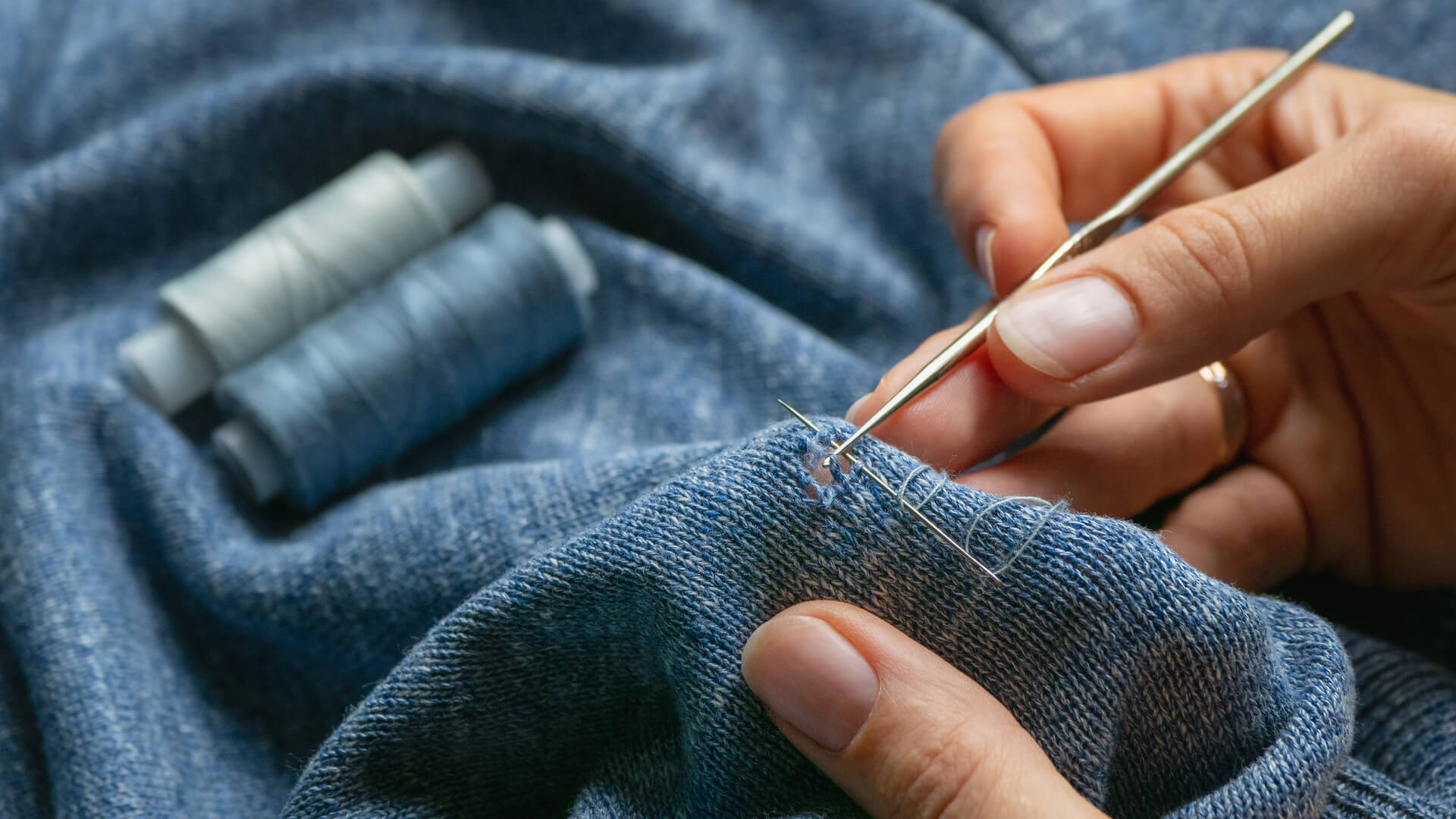Imagine discovering a small hole in your favorite blazer. Perhaps it’s a moth hole in your wool trousers or a tear in your cherished cashmere sweater. It’s disheartening — especially when the garment is valuable, sentimental, or hard to replace. But what if there was a way to restore that fabric so perfectly that even you couldn’t find the original damage?
Enter the world of the reweaving service, a specialized textile repair technique where skilled artisans invisibly mend holes, tears, and other fabric damage with meticulous precision. It’s a solution for those who care deeply about their garments, appreciate quality, and understand that craftsmanship can preserve more than just fabric — it can preserve memories, style, and sustainability.
What Is Reweaving?
Reweaving is a highly skilled repair method used to restore damaged woven or knitted garments. Unlike patching or sewing, reweaving doesn’t just cover up a problem — it reconstructs the fabric itself. Using threads from hidden parts of the garment (like hems or seams), a reweaver recreates the original weave or knit, thread by thread, until the damaged area is indistinguishable from the surrounding fabric.
This painstaking method is used to fix:
- Small holes (like moth damage)
- Rips and tears
- Burns or snags
- Fabric thinning
Reweaving is commonly applied to high-end garments made from wool, cashmere, silk, or fine cotton — often on suits, coats, sweaters, trousers, and heirloom pieces. It is especially valuable for items where visual integrity is essential, and standard mending would be too obvious.
The Magic of Invisible Repair
What makes a reweaving service so impressive is its near-magical ability to make damage vanish. Often referred to as invisible mending, this form of reweaving is done under magnification, using ultra-fine needles and matching threads. The reweaver follows the fabric’s original weave — whether plain, twill, or herringbone — matching the thread count, direction, and tension.
When completed correctly, the reweaved area blends so seamlessly that even trained eyes struggle to detect it. This makes reweaving the gold standard for restoring high-value garments without compromising their look or structural integrity.
There are different types of reweaving techniques used based on the type of damage:
1. French Reweaving
Used for small holes or tears, this method involves weaving individual threads into the fabric in both directions, mimicking the original pattern. It is the most invisible form of repair and is ideal for formalwear or tailored garments.
2. Inweaving
Best for larger holes or more substantial damage, inweaving involves cutting a small patch from hidden parts of the garment and weaving it into the damaged area. While not as invisible as French reweaving, it still preserves the fabric’s integrity and is less noticeable than traditional patchwork.
3. Knit-In Repairs
For knitwear, reweaving experts use knit-specific techniques to reconstruct loops and stitches, restoring sweaters and scarves with exceptional accuracy.
Why Choose a Professional Reweaving Service?
Reweaving is not a quick fix. It’s a specialized craft that takes time, focus, and years of experience to master. Here’s why people trust professionals for such intricate work:
1. Preservation of High-Value Garments
Whether it’s a bespoke suit, a designer coat, or a family heirloom, some garments are simply too valuable — financially or sentimentally — to be replaced. Reweaving gives these garments a second life, saving them from premature retirement.
2. Seamless Results
Unlike visible mending or sewing techniques, professional reweaving doesn’t alter the garment’s look. There are no unsightly patches, stitches, or glue. The repaired area blends with the original fabric in color, texture, and pattern.
3. Sustainability and Conscious Fashion
Choosing reweaving over replacement supports sustainable fashion. By restoring garments instead of discarding them, consumers reduce textile waste and environmental impact, contributing to a more ethical and circular wardrobe.
4. Tailored to Every Fabric
Reweaving isn’t one-size-fits-all. Skilled reweavers adapt their techniques based on fabric type, weave complexity, and the garment’s structure. From a pinstripe wool suit to a tightly knit cashmere pullover, professionals know how to treat each fabric appropriately.
The Process of Professional Reweaving
A professional reweaving service typically follows a meticulous process designed to ensure the best possible outcome:
- Assessment
The garment is examined to determine the type, location, and extent of the damage. The reweaver considers the fabric structure, color, and pattern before deciding on the most appropriate method. - Thread Matching
Threads are sourced from hidden areas of the garment — such as seams or hems — to ensure an exact match in color and texture. This is a critical step, especially when performing invisible mending. - Reconstruction
The fabric is rebuilt one thread at a time, using magnification and precision tools. This step may take hours, especially for fine fabrics or detailed weaves. - Finishing
Once the reweaving is complete, the garment is blocked or pressed to ensure the repaired area blends smoothly with the rest of the fabric. In most cases, the repair is undetectable both visually and by touch.
Who Benefits from Reweaving?
While anyone can benefit from reweaving services, certain people find them especially valuable:
- Professionals with Tailored Clothing: Business attire is an investment. Reweaving keeps suits, trousers, and blazers looking sharp and intact.
- Vintage and Heirloom Collectors: Garments with historical or emotional value can be preserved for display or continued wear.
- Eco-Conscious Consumers: Those committed to reducing waste and supporting ethical fashion practices find reweaving a powerful alternative to buying new.
- Luxury Clothing Owners: Designer garments are often irreplaceable. Reweaving ensures that a small flaw doesn’t compromise an entire piece.
An Investment in Preservation
In a world dominated by fast fashion, reweaving stands out as a quiet rebellion — a reminder that not all damage is the end. Some garments are worth saving not just for their material value, but for their meaning. Whether it’s a moth hole in a wool coat, a tear in your favorite pants, or a burn mark on a silk blouse, a professional reweaving service turns imperfections into invisible history.
Beyond repair, it’s about respect: for the garment, for the craft, and for the planet.
Final Thoughts
Reweaving is not just a technique — it’s an art form that marries skill with patience, history with sustainability, and imperfection with beauty. It allows us to hold on to the pieces we love a little longer, to value quality over quantity, and to embrace fashion that lasts.
So, the next time you discover an unwelcome hole or tear in a cherished garment, don’t reach for the donation bin. Instead, consider a professional reweaving service — where what once was damaged can be restored, invisibly and beautifully, to its original elegance.




